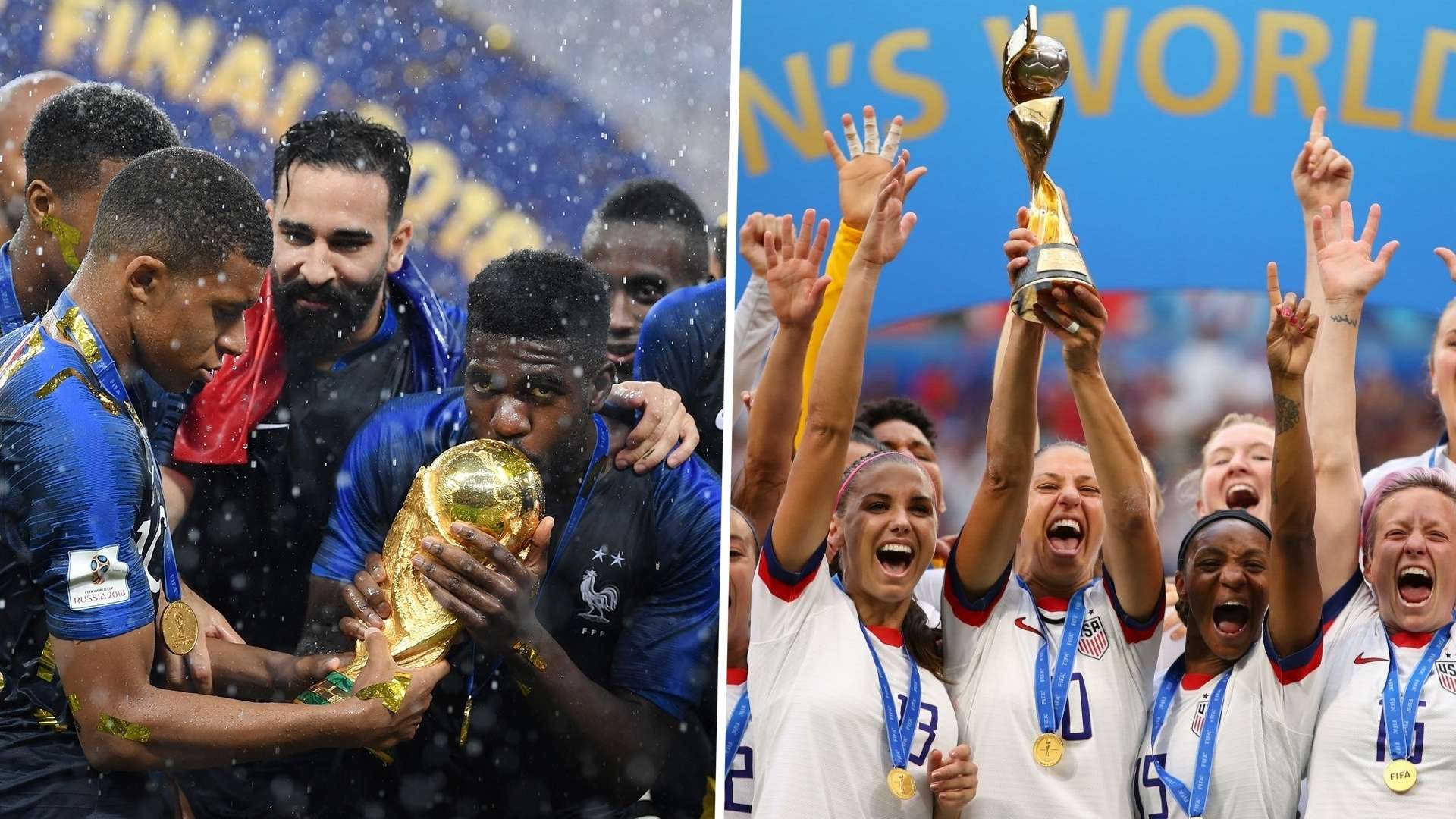Visibility of women's football both domestically and internationally has improved over the years, but a lot of work still needs to be done to make sure enough time and money is invested in the women's game - not to mention in dealing with the lack of equal pay.
The substantial gender pay gap is a major issue within the sport, with Women's World Cup winners earning less prize money than the Men's World Cup winners.
Goal takes a look at what the Men's team and the Women's team earn for winning their respective World Cups.
How much do the Men's World Cup winners get paid?
The France team that won the 2018 World Cup in Russia were awarded $38m (£29m).
A total of 32 teams competed for $400m (£315m) in prize money.
Prize money is awarded based on how far each team managed to progress within the tournament.
France's cash prize alone was more than what all 24 women's teams competed for in the 2019 World Cup.
How much do the Women's World Cup winners get paid?
The USWNT side that won the 2019 Women's World Cup in France were awarded $4m (£3.2m).
The total prize money awarded to all participating teams in the 2019 World Cup was in the region of $30m (£24m). It is 7.5 per cent of the total prize money awarded to the 2018 Men's champions.
In reality, since the Women's World Cup winners do not earn a substantial amount from winning the tournament compared to their male counterparts, they have to rely on other streams of revenue - sponsorship deals, partnerships and salaries given to them by their federation.
 Getty
Getty
"At the end of the day, the prize money ends up being so small for the women compared to the men, that we see players relying more on sponsorships, club salaries or federation salaries," writes Caitlin Murray, who has written a book on the history of the USWNT.
In March 2019, the U.S. women's national time filed a lawsuit against governing body U.S. Soccer for gender discrimination and unequal pay.
Why is there such a substantial prize money gap?
The most common explanation for the large gap between the payouts for the Men's World Cup winners and the Women's World Cup winners is the difference in revenue generated from both competitions.
FIFA have said that commercial revenues from the Women's World Cup, for example, cannot be considered differently from other competitions, as rights are sold as a packaged deal.
It is argued that there is a greater universal interest in the men's game compared to the women's game, resulting in more lucrative television, sponsorship and broadcast deals.
The 2015 Women's World Cup in reportedly earned in $73m (£57m) in revenues, including $17m (£13m) in television commercials in the United States - but these figures are nothing compared to the $6b (£4b) of revenue that the 2018 Men's World Cup earned in Russia.
The fact that the men's game invites more viewers, however, is still more of a society-wide problem and a reflection on how the women's game should be given more support.
The men's sport has been invested in more lucratively than the women's team, and because time and care is taken to invest in the men's sport, it results to more viewers, worldwide interest and financial backing.
FIFA already doubled the prize money for the 2019 Women’s World Cup from the 2015 amount of $15m (£12m) to $30m (£24m).
But the likes of global h global footballers’ union FIFPRO say that far more work needs to be done to ensure more balanced payouts for the men's and women's winners: “Despite these changes football remains even further from the goal of equality for all World Cup players regardless of gender," they said.
"In reality, the changes actually signify an increase in the gap between men’s and women’s prize money. This regressive trend appears to contravene FIFA’s statutory commitment to gender equality.”




